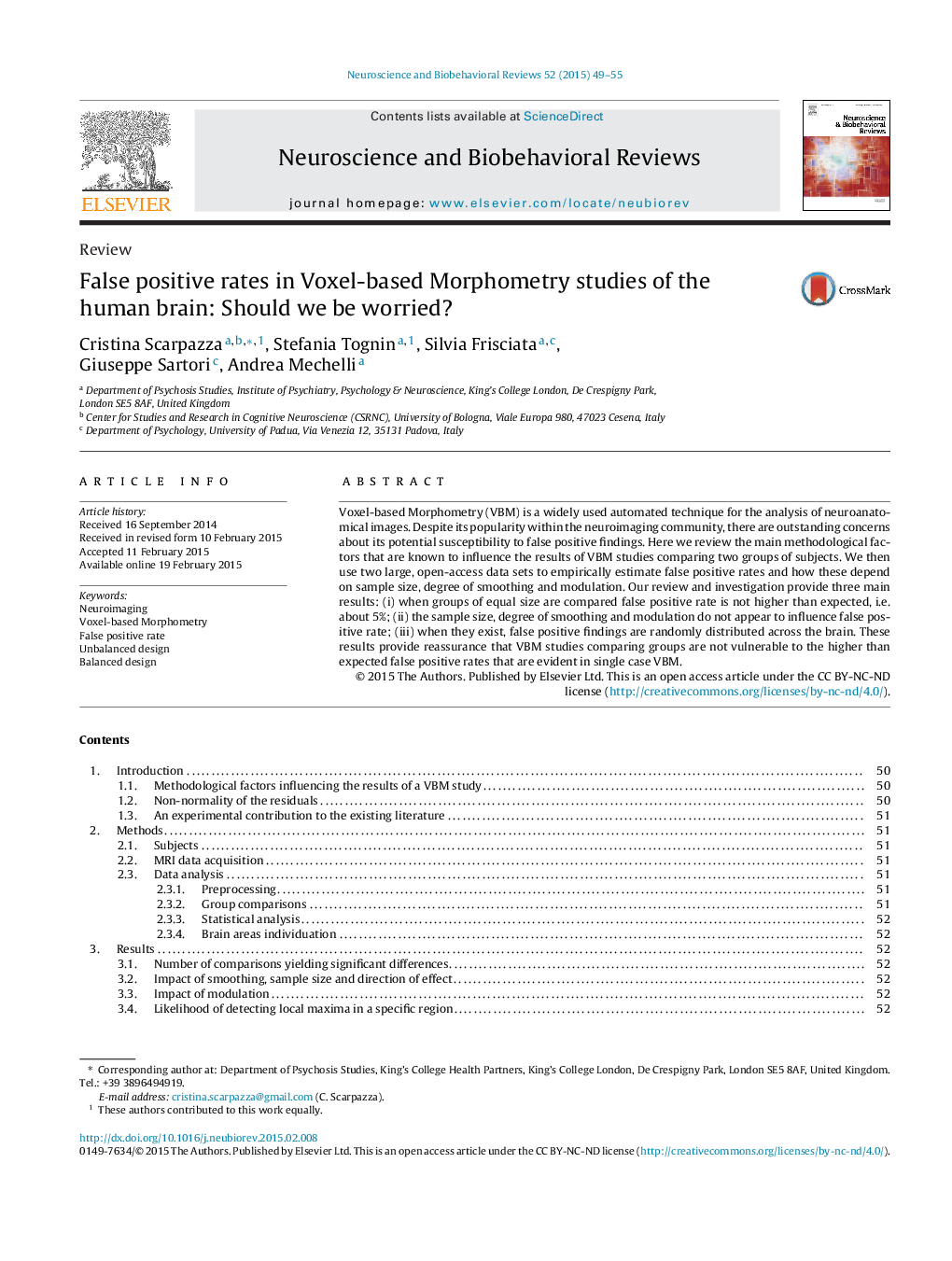| Article ID | Journal | Published Year | Pages | File Type |
|---|---|---|---|---|
| 7303498 | Neuroscience & Biobehavioral Reviews | 2015 | 7 Pages |
Abstract
Voxel-based Morphometry (VBM) is a widely used automated technique for the analysis of neuroanatomical images. Despite its popularity within the neuroimaging community, there are outstanding concerns about its potential susceptibility to false positive findings. Here we review the main methodological factors that are known to influence the results of VBM studies comparing two groups of subjects. We then use two large, open-access data sets to empirically estimate false positive rates and how these depend on sample size, degree of smoothing and modulation. Our review and investigation provide three main results: (i) when groups of equal size are compared false positive rate is not higher than expected, i.e. about 5%; (ii) the sample size, degree of smoothing and modulation do not appear to influence false positive rate; (iii) when they exist, false positive findings are randomly distributed across the brain. These results provide reassurance that VBM studies comparing groups are not vulnerable to the higher than expected false positive rates that are evident in single case VBM.
Related Topics
Life Sciences
Neuroscience
Behavioral Neuroscience
Authors
Cristina Scarpazza, Stefania Tognin, Silvia Frisciata, Giuseppe Sartori, Andrea Mechelli,
